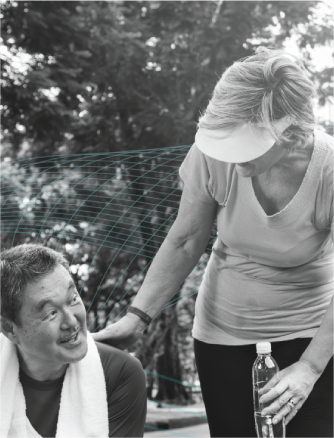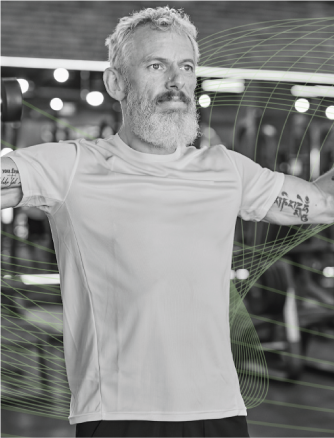This is custom heading element
December 28, 2016 | BY BIOTRICITY
Elation quickly turned to grief in September 2010 when Oregon high school football star Hayward Demison scored a touchdown, then immediately fell to the ground, dead from sudden cardiac arrest (SCA).1
When a young person dies during a sporting event, we can’t believe it. When we hear of marathon runners dropping dead from heart attacks, we’re stunned. Maybe it’s because most of these people are young. Perhaps we equate physical fitness with health. And that’s where we’re wrong.
Physically fit doesn’t necessarily mean we’re protected against sudden health calamities. People who die from SCA either ignore the warning signs or never identify them to begin with. In young athletes, it’s typically undiagnosed arrhythmias that cause sudden cardiac arrest.
Not long ago, there was little anyone could do to prevent a student-athlete dying on the field from SCA. Even with annual physical requirements for students who participate in sports, SCA still causes about 70 athlete deaths in the U.S each year, and over 300,000 total deaths.2
Sudden cardiac arrest is different than a heart attack
Sudden cardiac arrest is not a heart attack, which happens because of blockages in the arteries that restrict or stop blood flow to the heart. SCA is due to electrical problems in the cardiovascular system that cause dangerously fast or slow heart rates.
Not only young athletes are at risk for sudden cardiac arrest. Former heart attack victims are among the individuals most likely to die from SCA. According to an online article published in MediaPlanet: “While there are many causes of sudden cardiac arrest, including underlying heart rhythm disorders, one of the most common risk factors is a recent heart attack. The dead muscle from a heart attack can disrupt the heart’s natural electrical system and lead to SCA.”3 According to the same article, “more than 1.5 million Americans will have a heart attack this year,” and many of these people will be unaware of further SCA risk or cardiac related problems that the heart attack might have induced.3
Cardiac testing can save lives
A groundbreaking Italian study published by JAMA (Journal of American Medical Association), cite electrocardiogram (ECG) and echocardiogram as two simple tests that can save lives, with the ECG having “the potential to detect heart conditions that account for up to 60% of sudden deaths in young competitive athletes.” 4 From 1979 to 2004, a group of researchers in Italy studied 55 athletes to determine if cardiac testing could reduce the incidences of SCA.5 They found that it could. So, while the threat of sudden cardiac arrest is present, death from SCA can be prevented. In fact, this 25-year study determined that: Cardiac testing reduced deaths by an astounding 89 percent.5
Mobile cardiac monitoring is the solution of the future
Overall, cardiovascular disease (CVD) is still the leading killer on the planet, “accounting for more than 17.3 million deaths per year, a number that is expected to grow to more than 23.6 million by 2030,” according the American Heart Association.6 While mobile heart monitoring used to be cumbersome and was only prescribed to a patient presenting symptoms of CVD—which left out at-risk young athletes—modern medicine has advanced such that mobile monitoring can be practical and comfortable for all patients.
A clinical-grade mobile monitoring device, like our own Bioflux, is a diagnostic ECG tool that could help detect arrhythmias that cause sudden cardiac arrests. Bioflux measures and monitors a patient’s ECG while they are on the go and can remotely transmit the medical data to a CMS-cleared monitoring center with certified cardiac technicians who interpret the patient data and send it to their attending physician. These mobile devices offer physicians access to essential patient data after that data has already been screened, which can speed up and improve the diagnostic process. With cardiac issues, time is of the essence, and Bioflux was created to allow a physician to diagnose a cardiac condition, advise appropriate preventative measures, and create a care regimen—all while the patient is free to live life as normally as possible.
Wearable medical monitoring devices are a modern miracle that have the potential to save hundreds of thousands of lives each year.
Fast Facts: Young Athletes & SCA
Risk & PreventionYoung athletes with the following risk factors have a greater risk of SCA:
Information found on Boston Scientific’s website, http://www.your-heart-health.com/en-US/heart-disease-facts/young-athletes.html |
Resources:
[1] http://www.today.com/health/teen-athletes-sudden-deaths-spur-call-heart-screening-2D80555866 [return]
[2] http://www.sca-aware.org/about-sca [return]
[3] http://www.futureofpersonalhealth.com/prevention-and-treatment/sudden-cardiac-arrest-its-not-a-heart-attack [return]
[4] http://www.your-heart-health.com/en-US/heart-disease-facts/young-athletes/how-coaches-can-help.html [return]
[5] https://www.ncbi.nlm.nih.gov/pubmed/17018804 [return]
[6] http://www.heart.org/idc/groups/ahamah-public/@wcm/@sop/@smd/documents/downloadable/ucm_480086.pdf [return]





